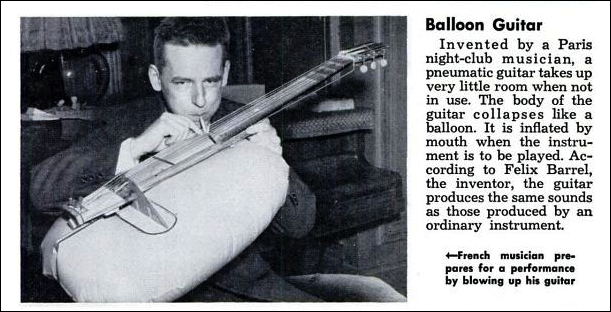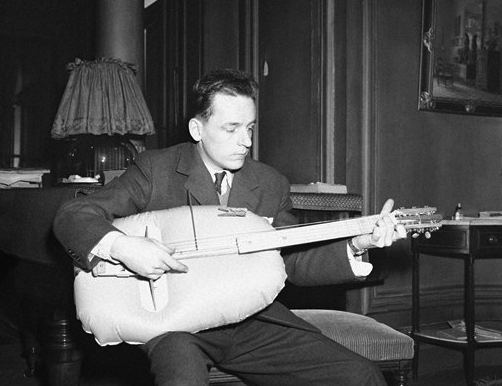1950s
Miss Chicken of Tomorrow
Two "Chicken of Tomorrow" contests were held. The first in 1948, and the second in 1951. Their purpose was to encourage farmers to breed meatier chickens. And they apparently succeeded. Modern Farmer magazine reports that, "Some of the champions of these competitions became the major genetics suppliers of today's poultry."Of course, at the time one couldn't hold such a major competition without simultaneously holding a beauty contest to find a young woman to be its queen. So, Nancy Magee became the first "Chicken of Tomorrow Queen" and Joan Walters was the second. Joan got quite a bit more publicity. She was paraded around the country as "Miss Chicken of Tomorrow."
For more info, check out this old documentary on YouTube about the 1948 contest.
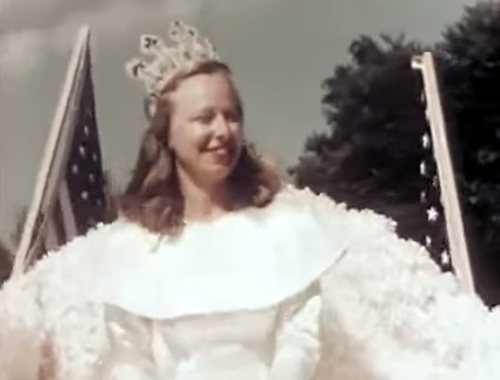
Nancy Magee, the 1948 Chicken of Tomorrow Queen
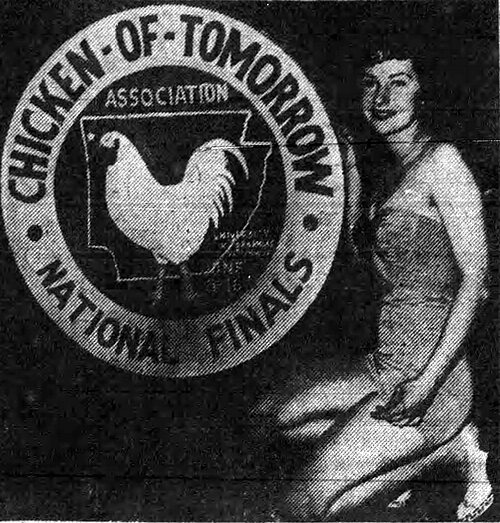
"Miss Joan Walters of Rogers, Ark., 18-year-old brunette beauty, was crowned Chicken-of-Tomorrow Queen here last Friday night in a ceremony at the University of Arkansas field house."--The Madison County Record - Apr 12, 1951
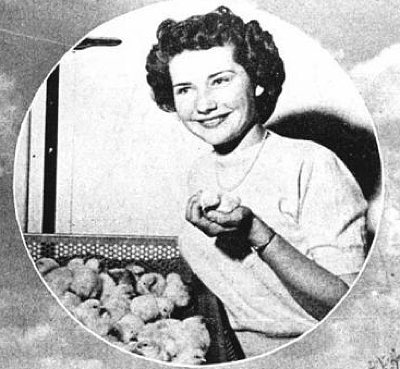
"Miss Joan Walters of Rogers, Ark., was recently named National Chicken-of-Tomorrow Queen." Image source: Arkansas Land and Life - Spring/Summer 2004
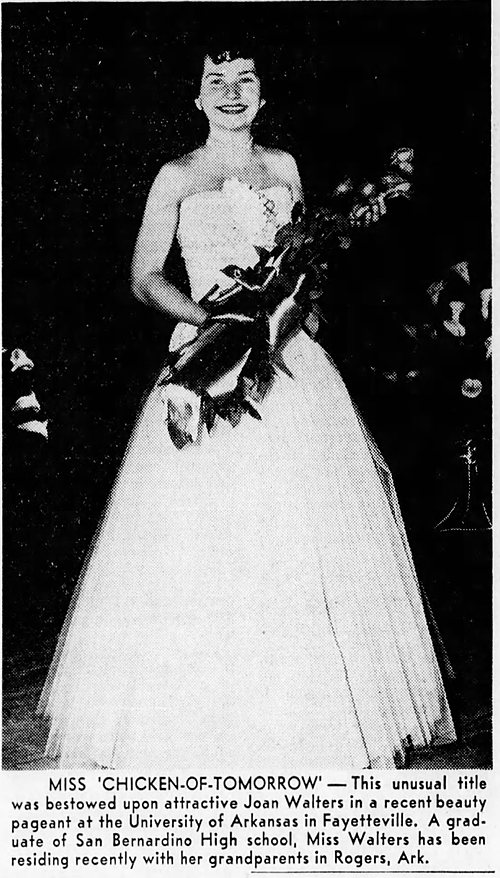
San Bernardino County Sun - Apr 8, 1951
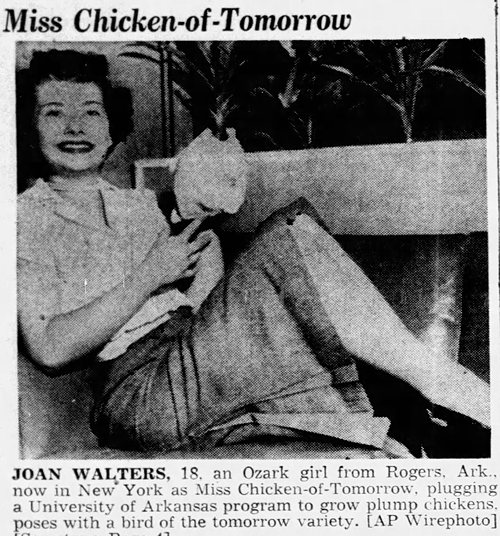
Orlando Evening Star - May 25, 1951
Posted By: Alex - Tue Nov 02, 2021 -
Comments (0)
Category: Awards, Prizes, Competitions and Contests, Farming, 1940s, 1950s
Haruo Shimada, Child Artist
As a young boy of five living in Tokyo, Haruo Shimada was hailed as an artistic prodigy. Articles about him appeared in American papers as well as in Life magazine. It was noted that his preferred subject was 'impressionistic nudes'.

With news stories like this there's usually no follow-up, which I always find frustrating. So you never find out what happened to these people later in life. But that's not the case with Shimada thanks to his personal website on which he tells the story (in English) of his subsequent career.
Shimada explains that he gave up painting while still young, after his instructor, Kenzo Akada, moved to the United States. In college he studied economics, and eventually he became a professor of economics at Keio University and MIT. But late in life, at around the age of 60, he decided to take up painting again and ended up having an exhibition of his work at Chanel's flagship store in the Ginza district of Tokyo.
He's posted a gallery on his site of some of his later works. I don't see any nudes. Instead, his preferred subjects now seem to be landscapes and abstract patterns.

Chicago Tribune - May 14, 1950
Posted By: Alex - Wed Oct 20, 2021 -
Comments (1)
Category: Art, Children, 1950s
John Cameron Swayze Board Game
A board game with built-in obsolescence. Not the brightest notion.The entry at Board Game Geek.
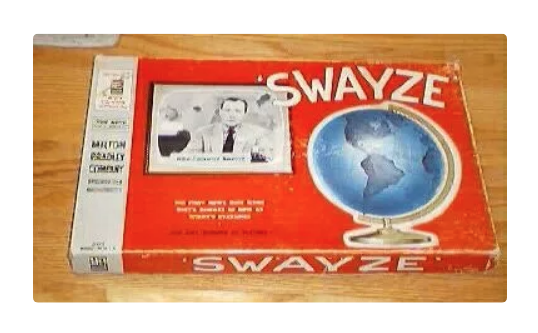
Swayze is a Quiz game based on today's news. The players take turns acting as the Quizmaster who thinks of a news item from recent headlines, using a special map of the world. The other players are panel members who try and identify the news event by asking questions. John Cameron Swayze lends his name to the game. Yes the same John Cameron Swayzee of TIMEX watch commercials fame. Back when this game was around Swayze was doing the evening news and was a pretty famous and well recognized newsman and TV celebrity.
A book comes with the game that has current events listed for different areas of the world just in case the Quizmaster cant think of any for a particular area of the world. Some examples of what's in the book; Mount Everest conquered by Hillary May 1953, Ben Hogan wins British Open July 1953, US Forces enter Korea south of 38th Parallel Jul 1950, Mohandas Gandhi assassinated Jan 1948.
Posted By: Paul - Thu Sep 30, 2021 -
Comments (2)
Category: Games, Television, Current Events, Headlines and Topicality, 1950s
The Cola Queens
So far as I can tell, these beauty queens hailed from a single year's contest in British Guiana.Read about it here.
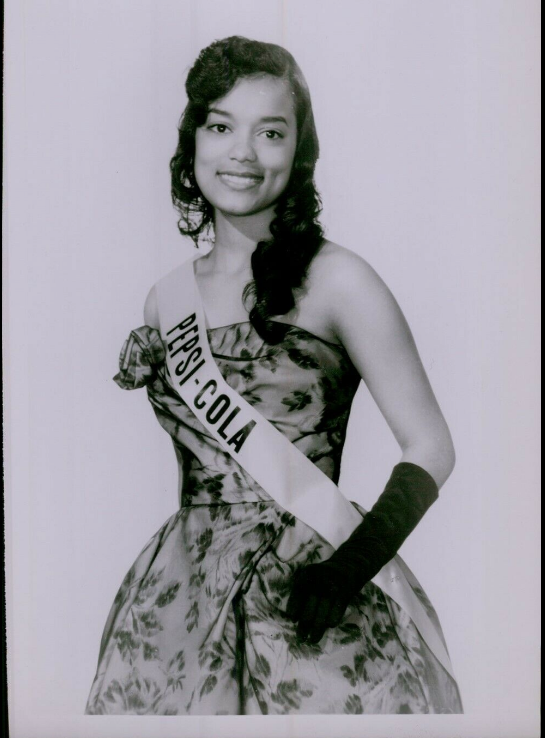
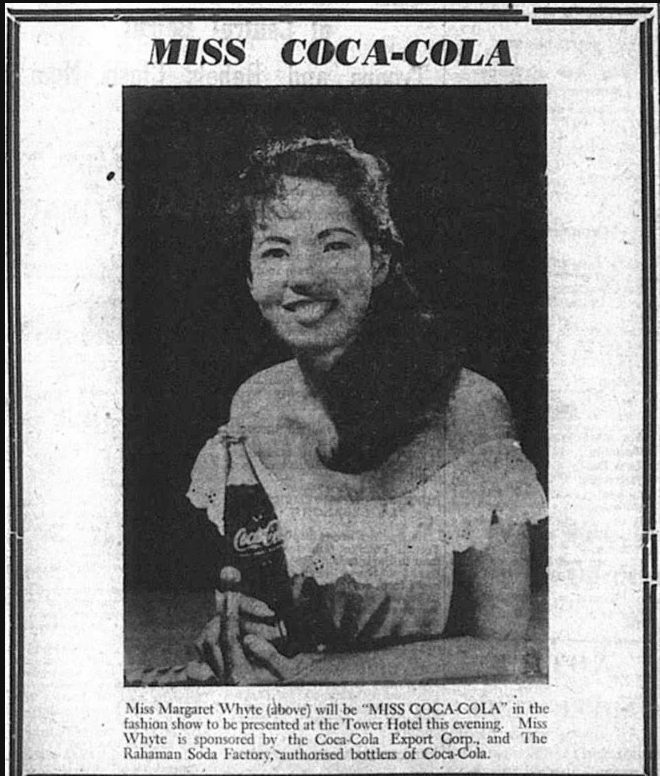
Posted By: Paul - Wed Sep 29, 2021 -
Comments (1)
Category: Awards, Prizes, Competitions and Contests, Beauty, Ugliness and Other Aesthetic Issues, Soda, Pop, Soft Drinks and other Non-Alcoholic Beverages, 1950s, South America
Felix Barrel’s Pneumatic Guitar
I originally posted this back in Oct 2012, but I was recently contacted by Matt Nolan who informed me that the info in the post wasn't entirely accurate. 'Felix Barrel' was actually the tongue-in-cheek stage name of François Baschet, who was granted both a French and US patent for his invention. Also, he invented it in 1952, not 1955.The picture of Baschet with his guitar can be found on the website of the Baschet Association, which explains that its invention was just the start of Baschet's long career as a creator of unusual instruments, particularly ones that involved "folding metal sheets into geometric shapes".
Thanks to Matt for the info!
Back in
Posted By: Alex - Sat Sep 25, 2021 -
Comments (8)
Category: Music, Patents, 1950s
You’re never alone with a Strand
The 1959 "Lonely Man" TV ad for Strand cigarettes is rumored to be the greatest advertising flop in UK history. Because it seemed to say, "If you smoke our cigarettes, you may become a lonely sad sack wandering the streets at night."Rob Gray has some analysis of the failed commercial in his book Great Brand Blunders:
The style of the protagonist and soundtrack to the commercial appealed to the public. Once it went on air people began getting in touch to find out if the theme tune was available to buy as a record. Sensing an opportunity, Cliff Adams and His Orchestra booked some recording studio time and laid down the track, The Lonely Man Theme, for release as a single. In 1960 The Lonely Man Theme broke into the Top 40...
Undeniably, the advertising campaign earned Strand tremendous recognition. As Winston Fletcher writes in his book Powers of Persuasion: The Inside Story of British Advertising 1951-2000, 'Public awareness of the brand and its advertising rocketed to over 90% within weeks. This was unprecedented and has rarely if ever been surpasssed.' It was a brilliant achievement, but one with a fatal flaw. Despite the high awareness levels delivered by the campaign, hardly anyone was buying the product.
The reasons why revolved around how the Lonely Man was perceived. Many viewers found the focus on loneliness uncomfortable. If the man was reliant on a packet of smokes for company, did this mean he was a bit of an oddball unable to sustain friendships? Was he an addictive personality, craving nicotine above human company? Could he be on his own because of a failed relationship or even due to bereavement? Might he be depressed?...
trying to position a new tobacco brand around loneliness — rather than something much more positive and aspirational, such as individuality — was doomed to failure. With sales failing to take off despite the high level of standout the advertising achieved, Strand was soon withdrawn from the market.
Posted By: Alex - Tue Sep 21, 2021 -
Comments (2)
Category: Music, Advertising, Smoking and Tobacco, 1950s
Mrs. America Contest of 1950
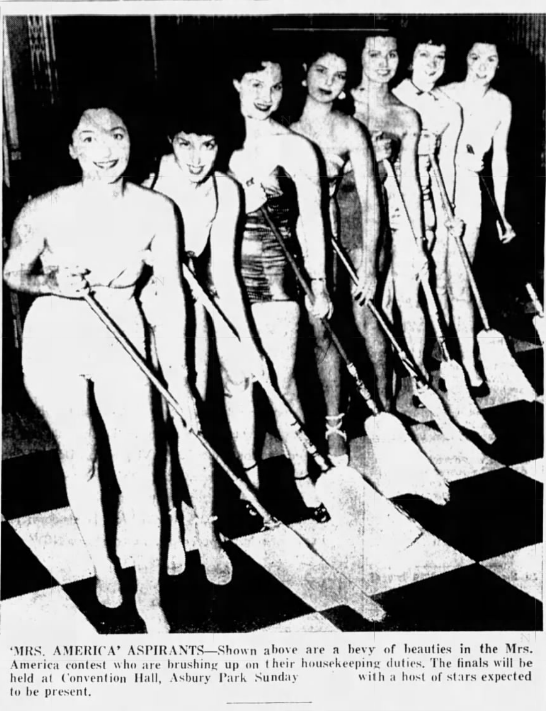
Source of first clip below: Florence Morning News (Florence, South Carolina) 21 Aug 1950, Mon Page 6
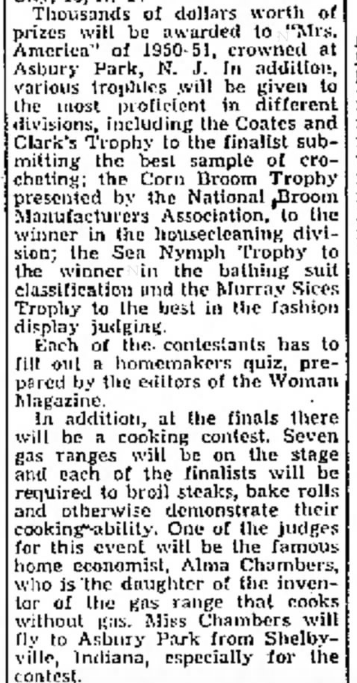
Source of main article below (also photo above): The Daily Record (Long Branch, New Jersey) 08 Sep 1950, Fri Page 7
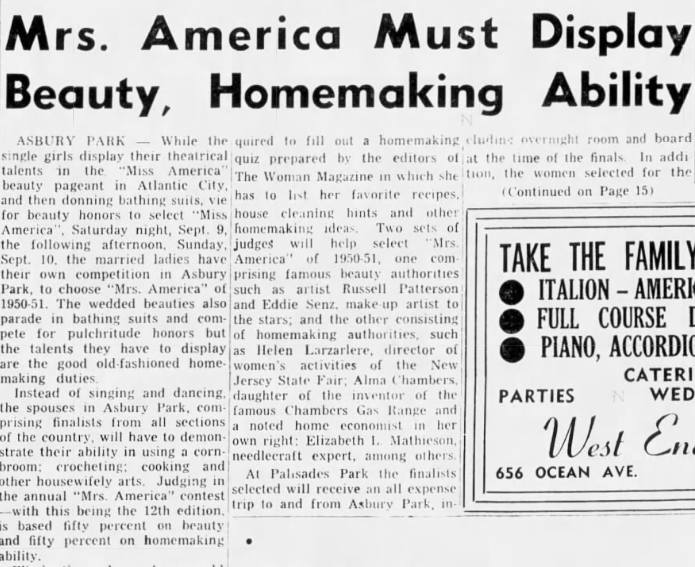

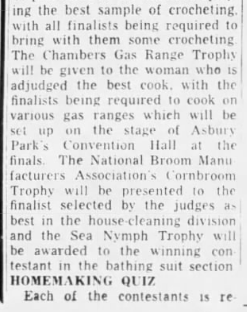
Posted By: Paul - Mon Sep 20, 2021 -
Comments (2)
Category: Awards, Prizes, Competitions and Contests, Beauty, Ugliness and Other Aesthetic Issues, Domestic, 1950s
Aluminum Al
In 1952, scientists at the General Electric Research Laboratory in Schenectady created the aluminum version of a Chia Pet. They called him "Aluminum Al".Source: Google Arts and Culture

Posted By: Alex - Mon Sep 13, 2021 -
Comments (1)
Category: Science, 1950s, Hair and Hairstyling
Sour Cream Cookbook Ad
We're sweet on sour cream.
Posted By: Paul - Fri Sep 10, 2021 -
Comments (1)
Category: Food, Advertising, 1950s
The Voice Bomb
This is another example of the military's interest in using sound to demoralize the enemy. This device was rather straightforward: "Dropped from a plane, the balloon bomb would drift to earth while the recorder blared out surrender demands or other morale-breaking messages to the enemy."See also: Weird alien sounds designed to terrify and panic, and Ghost Tape Number Ten
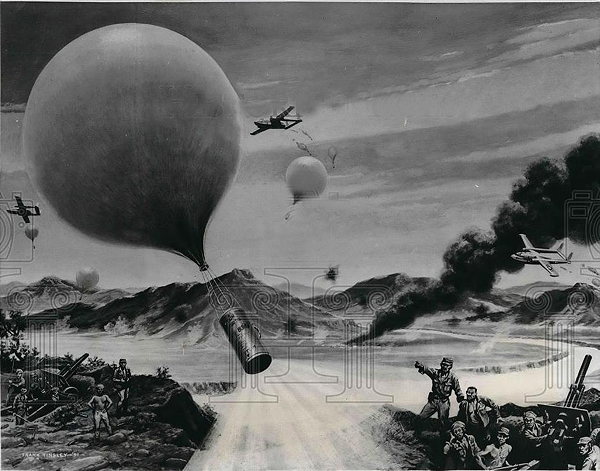

The Pantagraph - Oct 12, 1951
Posted By: Alex - Tue Sep 07, 2021 -
Comments (4)
Category: Psychology, 1950s, Weapons

| Who We Are |
|---|
| Alex Boese Alex is the creator and curator of the Museum of Hoaxes. He's also the author of various weird, non-fiction, science-themed books such as Elephants on Acid and Psychedelic Apes. Paul Di Filippo Paul has been paid to put weird ideas into fictional form for over thirty years, in his career as a noted science fiction writer. He has recently begun blogging on many curious topics with three fellow writers at The Inferior 4+1. Contact Us |

